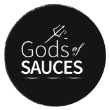Gluten-free diets have gained significant attention in recent years, but many people still wonder: what is gluten-free? Whether you’re considering a gluten-free lifestyle for medical reasons or personal preference, understanding what gluten-free means is essential. In this guide, we’ll break down everything you need to know about gluten-free foods, why people follow a gluten-free diet, and how to navigate gluten-free living.
What Is Gluten-Free?
A gluten-free diet eliminates gluten, a protein found in wheat, barley, rye, and their derivatives. Gluten gives bread its elasticity and helps baked goods maintain their structure. However, for some individuals, consuming gluten can lead to severe health issues, making a gluten-free diet a necessity.
Who Needs a Gluten-Free Diet?
People follow a gluten-free diet for various reasons, but the most common include:
1. Celiac Disease
Celiac disease is an autoimmune disorder where the body attacks the small intestine when gluten is consumed. Even small amounts of gluten can cause significant damage, leading to symptoms like bloating, diarrhea, fatigue, and nutrient deficiencies. The only treatment for celiac disease is a strict gluten-free diet for life.
2. Gluten Sensitivity
Non-celiac gluten sensitivity (NCGS) causes similar symptoms to celiac disease, such as bloating, headaches, and digestive discomfort, but without the autoimmune response. Many people with gluten intolerance find relief by switching to a gluten-free diet.
3. Wheat Allergy
Some individuals have a wheat allergy, which can cause reactions ranging from mild hives to severe anaphylaxis. A gluten-free diet helps them avoid wheat-related allergic reactions.
4. Personal and Health Choices
Some people choose a gluten-free diet for general health benefits, improved digestion, or to reduce inflammation. However, it’s important to ensure a balanced diet when eliminating gluten-containing foods.
Gluten-Free Foods: What You Can Eat
If you’re new to a gluten-free diet, knowing what foods are naturally gluten-free is key. Here are some safe and delicious options:
✅ Fruits & Vegetables – All fresh produce is naturally gluten-free.
✅ Meat, Poultry & Fish – Unprocessed and unbreaded meats are safe to eat.
✅ Dairy Products – Most plain dairy products like milk, cheese, and yogurt are gluten-free.
✅ Legumes & Beans – Lentils, chickpeas, and black beans are great gluten-free protein sources.
✅ Gluten-Free Grains – Rice, quinoa, corn, buckwheat, and millet are excellent alternatives.
✅ Nuts & Seeds – Naturally gluten-free and packed with nutrients.
Foods to Avoid on a Gluten-Free Diet
To maintain a gluten-free lifestyle, it’s essential to avoid the following gluten-containing foods:
❌ Wheat-Based Products – Bread, pasta, cereals, and pastries made with wheat.
❌ Barley & Rye – Found in beer, malt, and certain processed foods.
❌ Processed & Packaged Foods – Always check labels for hidden gluten.
❌ Soy Sauce & Condiments – Many contain wheat; opt for gluten-free versions.
How to Identify Gluten-Free Products
Reading labels is crucial when following a gluten-free diet. Look for:
• Certified Gluten-Free Labels – Many products are tested and certified gluten-free.
• Ingredients List – Avoid wheat, barley, rye, and malt derivatives.
• Allergy Warnings – Some packaging states if a product contains gluten.
Final Thoughts
Understanding what is gluten-free is the first step in adopting a gluten-free lifestyle. Whether you need to be gluten-free for health reasons or personal choice, knowing what to eat and what to avoid can help make the transition easier. With a growing range of gluten-free products available, living gluten-free is now more accessible than ever.
Would you like to see more gluten-free facts, tips, and recipes? Stay tuned to Gluten-Free Facts for the latest insights on all things gluten-free!

